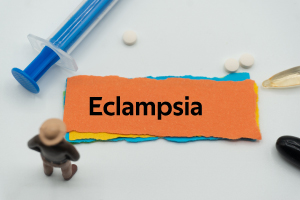

A neck lump is a noticeable swelling in the neck, often caused by infections, benign growths, or malignancies. Diagnostic factors include lump size, location, and associated symptoms like pain or swallowing difficulty. While most neck lumps are harmless, it is essential to consult a physician for evaluation to exclude potential health issues and decide on necessary treatment or monitoring.
Causes of Neck Lump
A small lump on the neck can be harmless, but it should not be ignored. The appearance of a neck lump can be an indication of some serious infection or cancerous growth. The reasons for the lump could be several, but proper evaluation is a must for advocating correct treatment. Some of the causes of the neck lump are given below:
1. Acne
Acne can lead to neck lumps when sweat, bacteria, and oil clog pores and have the potential to generate a lump on back of neck in the form of pimples. It can affect people of all ages and may worsen with factors like hair products, sweat, and clothing. Over-the-counter treatments and good hygiene can be effective, but severe cases may require prescription medications from a dermatologist.
2. Cyst
A sebaceous cyst, typically painless, may look like a pimple if infected, appearing anywhere on the neck. Squeezing worsens infections. Doctors can perform a simple, in-office removal procedure. If the neck lump is painful or red, it signals infection and needs immediate attention. Applying warm compresses and over-the-counter pain relief is advised to prevent complications and ensure proper care.
3. Swollen Lymph Nodes
Swollen lymph nodes in the neck often signal infection or health issues, serving as immune system sentinels. Treating the cause can resolve a lump, but persistent, painless growth needs medical attention.
4. Goiter
A goiter is an abnormal thyroid gland enlargement, seen as a neck swelling. It can be benign or related to thyroid hormone imbalances, causing difficulties in swallowing, breathing, coughing, hoarseness, or dizziness.
5. Hodgkin’s Disease
The primary symptom is painless lymph node swelling appearing as a small lump on neck, underarm, or groin area. Night sweats, itchy skin, and unexplained fever may accompany it. Other indications include persistent fatigue, unintended weight loss, and a lingering cough.
6. Boils
Boils are painful, red bumps that may signify skin infections. Avoid squeezing and consult a doctor if they persist or worsen.
Diagnosis of Neck Lump
Diagnosis of a neck lump comprises procedures as given below, which again varies from case to case.
- Your doctor will conclude after studying your symptoms, medical history, and what is revealed in the physical examination.
- Depending on what the doctor suspects, an ear, nose, and throat examination will be administered. A comprehensive evaluation will be done by the ENT specialist, which may require an oto-rhino-laryngoscopy to check the concealed areas of your ears, nose, and throat.
- Following this, you could receive referrals for various diagnostic assessments, such as blood tests or imaging procedures aimed at examining the tissues in your neck to pinpoint the origin of the neck lump.
- Additional tests that might be conducted encompass sinus X-rays, chest X-rays, neck ultrasound, and head and neck MRI scans.
Treatment for Neck Lump
The approach to treating neck lumps is subject to underlying causes, as the management strategy varies accordingly. Tailored treatments are vital in addressing these conditions effectively.
- Thyroid Problems: If a neck lump stems from thyroid issues, hormone therapy is frequently employed to restore hormonal balance and alleviate the problem.
- Skin Tumors and Lipomas: When neck lumps are attributed to skin tumors or lipomas, surgical intervention is often the go-to solution. In certain cases, radiation therapy may be recommended to ensure complete removal and prevent recurrence.
- Bacterial Infections: In instances where the neck lump results from a bacterial infection, the primary course of action is antibiotic therapy. These medications are prescribed to combat the infection and promote healing.
Throughout this process, you must be referred to the appropriate specialist for a thorough diagnosis and subsequent treatment. The expertise of specialists is indispensable in identifying the root cause of the lump and designing an effective course of action to manage and rectify the condition, ensuring the best possible outcome for your health.
Conclusion
Neck lumps can affect anyone and may not always indicate a severe problem. Nevertheless, it is crucial to consult your healthcare provider for a timely diagnosis and treatment, particularly if it is related to a serious issue. Early intervention is key.




